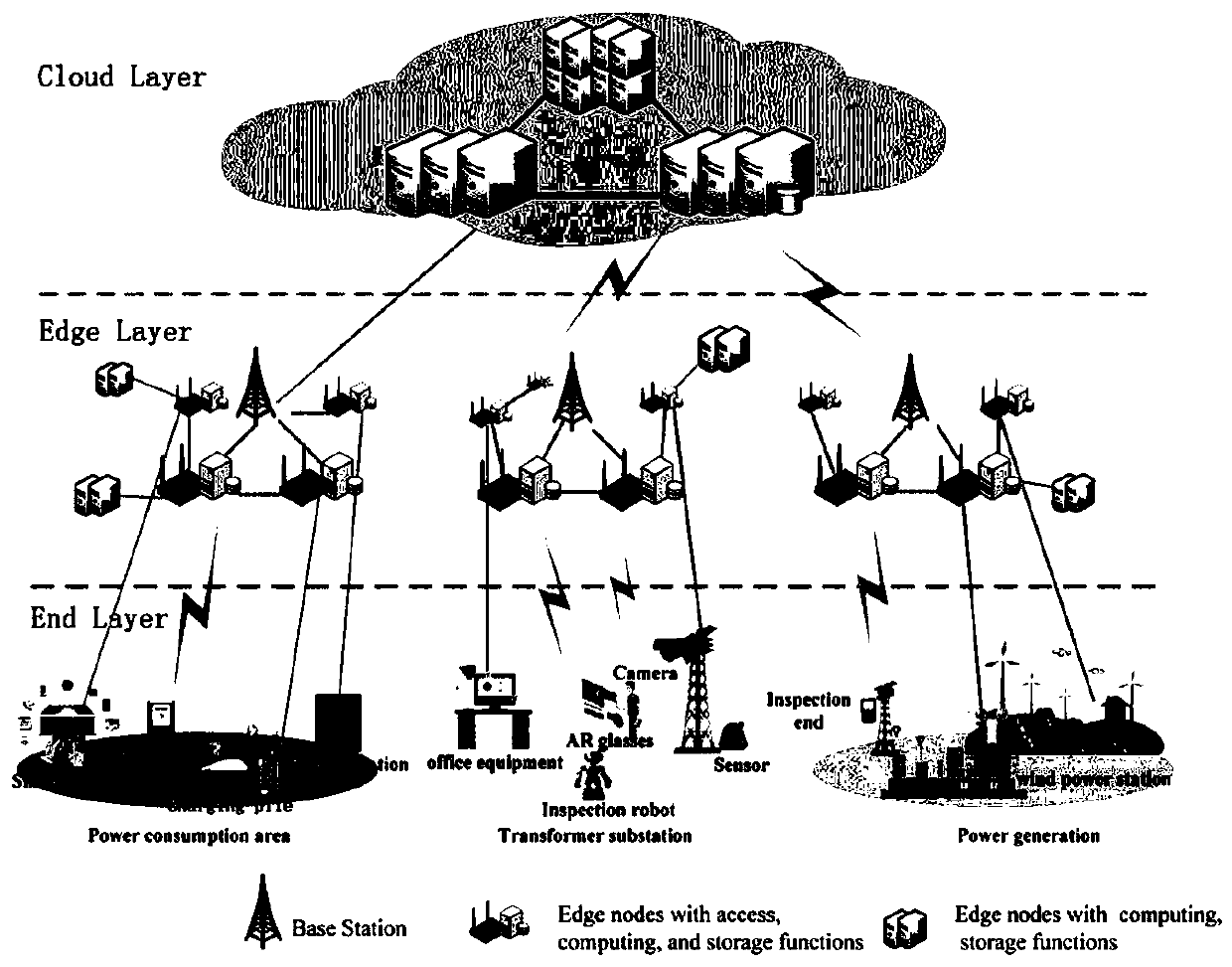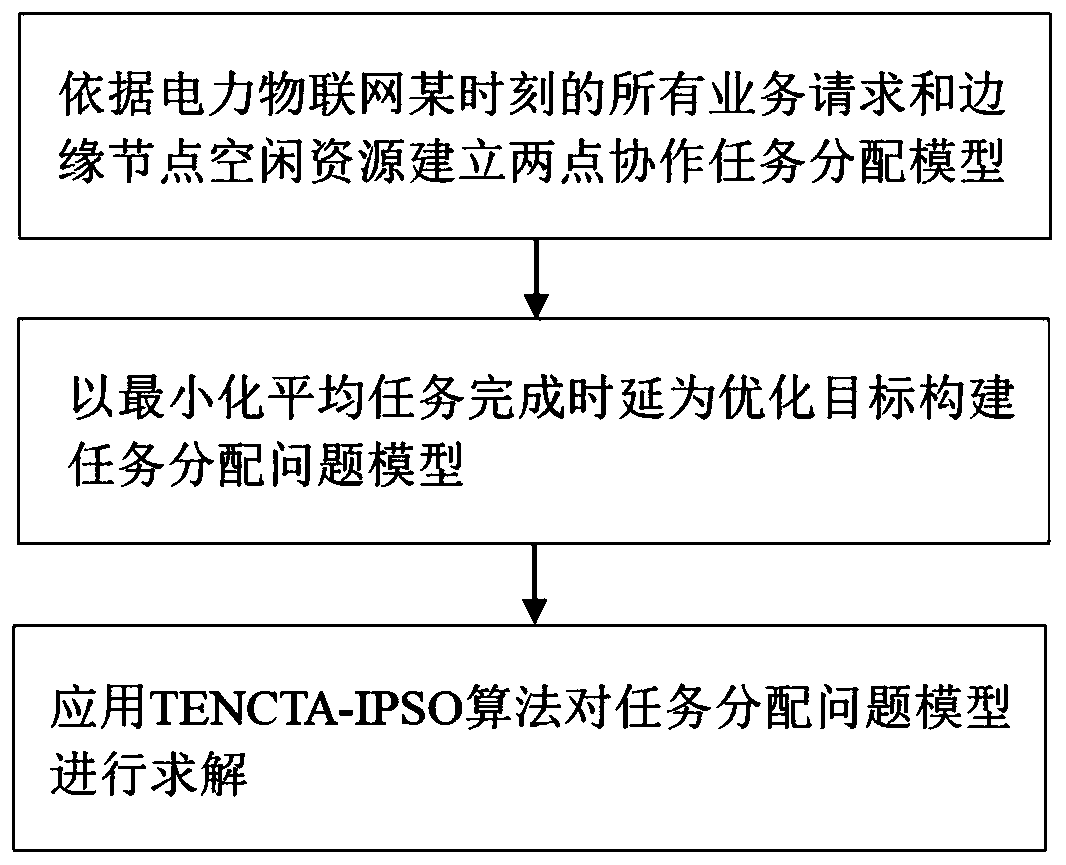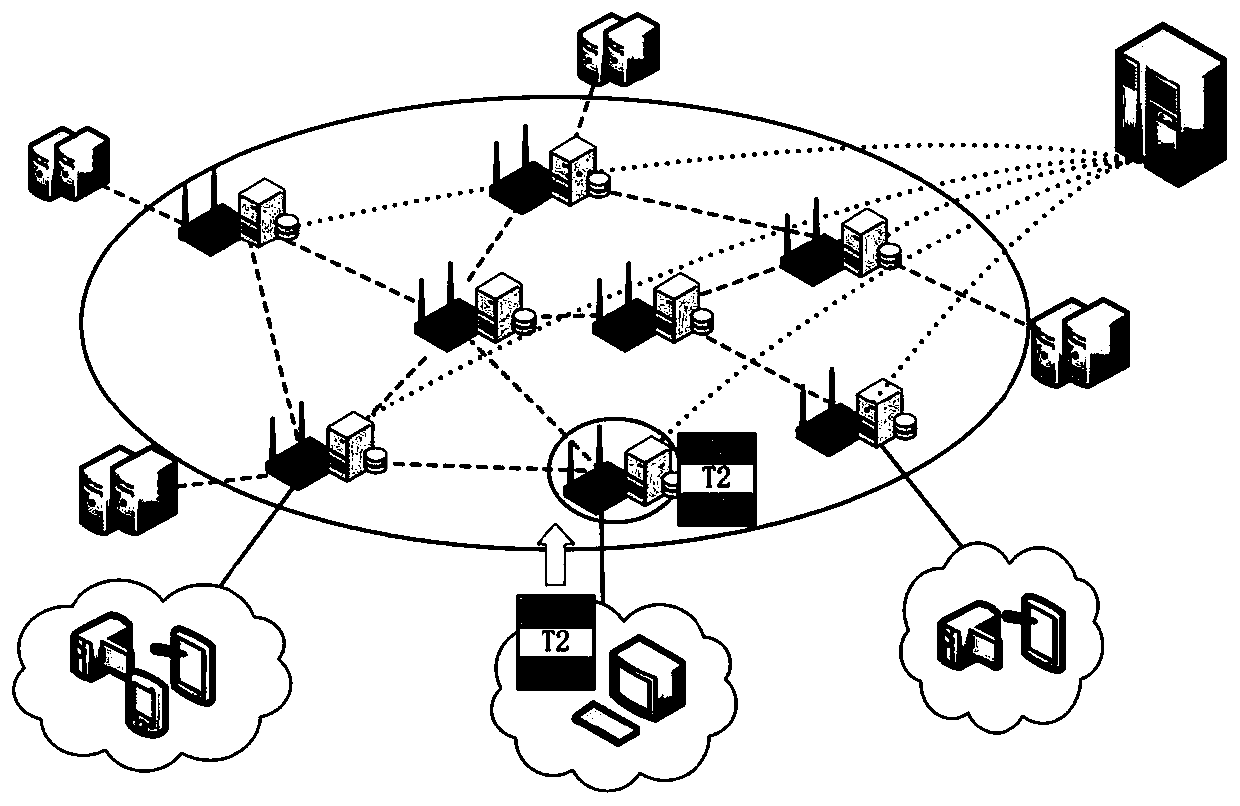Electric power Internet of Things task allocation method based on edge cooperation
A power Internet of Things and task allocation technology, applied in data processing applications, instruments, computing, etc., can solve problems such as unbalanced load, limited EN resources, and difficulty in meeting business needs.
- Summary
- Abstract
- Description
- Claims
- Application Information
AI Technical Summary
Problems solved by technology
Method used
Image
Examples
Embodiment Construction
[0118] The application will be further described below in conjunction with the accompanying drawings. The following examples are only used to illustrate the technical solutions of the present invention more clearly, but not to limit the protection scope of the present application.
[0119] like figure 2 As shown, an edge collaboration-based power Internet of Things task assignment method of the present application includes the following steps:
[0120] Step 1: Establish a two-point collaborative task allocation model based on all business requests and EN idle resources at a certain moment in the electric power Internet of Things;
[0121] 1. Business requests and resources
[0122] Assume that the network includes N UEs and M ENs, and ENs are edge devices with computing and storage capabilities. use and Denote UE set and EN set respectively.
[0123] The task request of the UE is executed cooperatively on the EN. Considering that the cooperation of multiple ENs will b...
PUM
 Login to View More
Login to View More Abstract
Description
Claims
Application Information
 Login to View More
Login to View More - R&D
- Intellectual Property
- Life Sciences
- Materials
- Tech Scout
- Unparalleled Data Quality
- Higher Quality Content
- 60% Fewer Hallucinations
Browse by: Latest US Patents, China's latest patents, Technical Efficacy Thesaurus, Application Domain, Technology Topic, Popular Technical Reports.
© 2025 PatSnap. All rights reserved.Legal|Privacy policy|Modern Slavery Act Transparency Statement|Sitemap|About US| Contact US: help@patsnap.com



